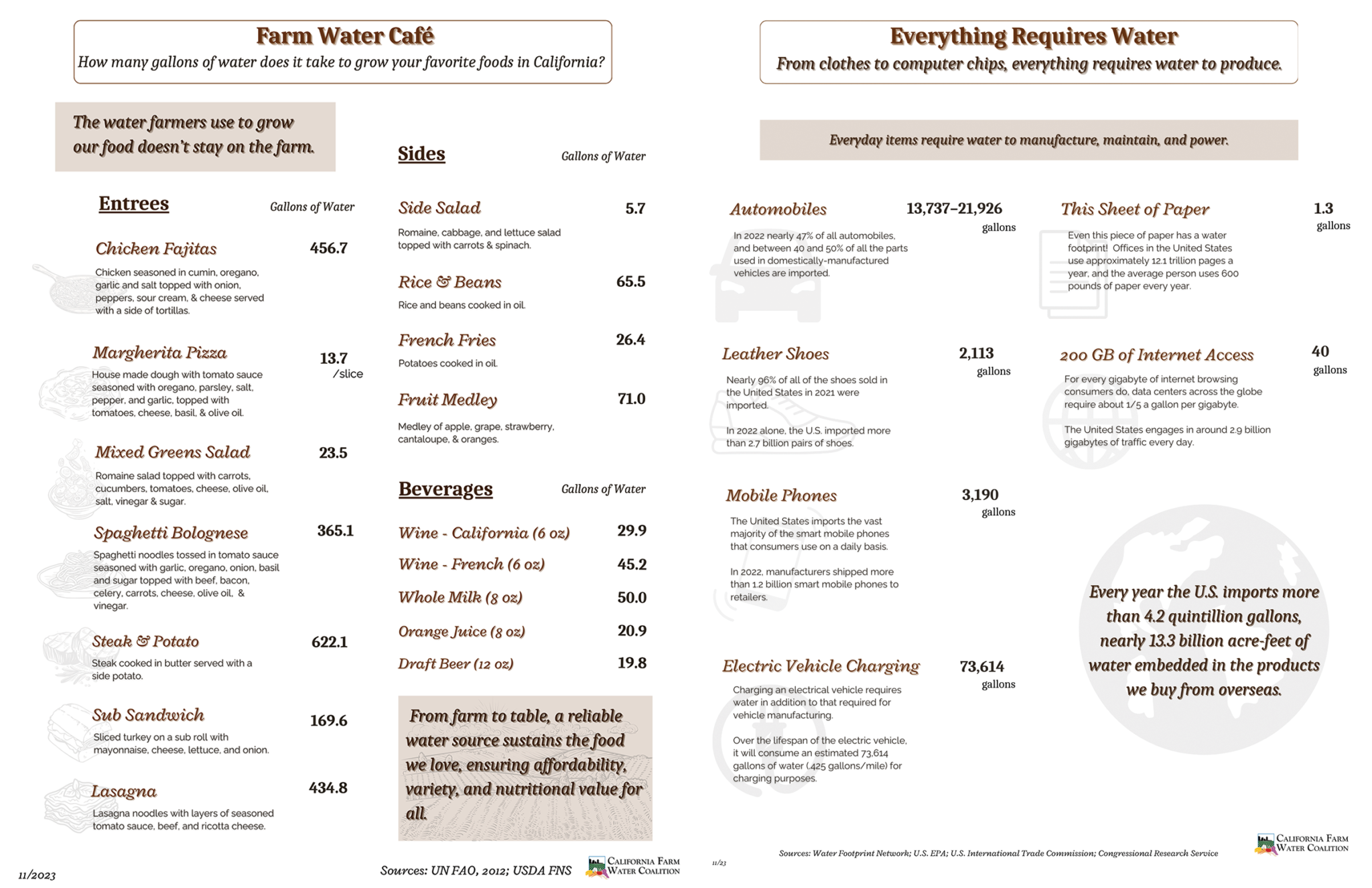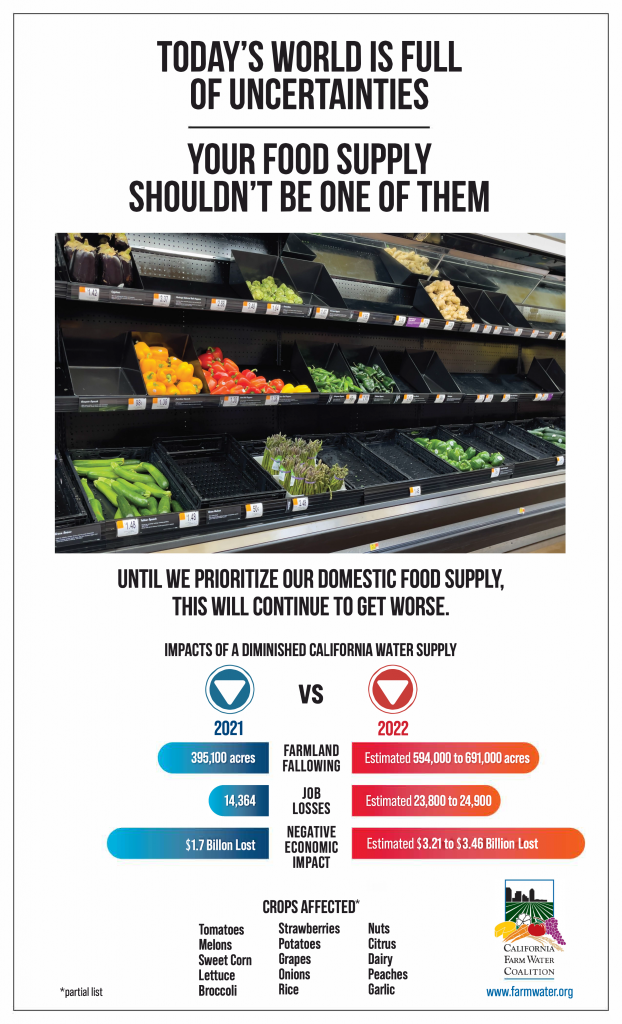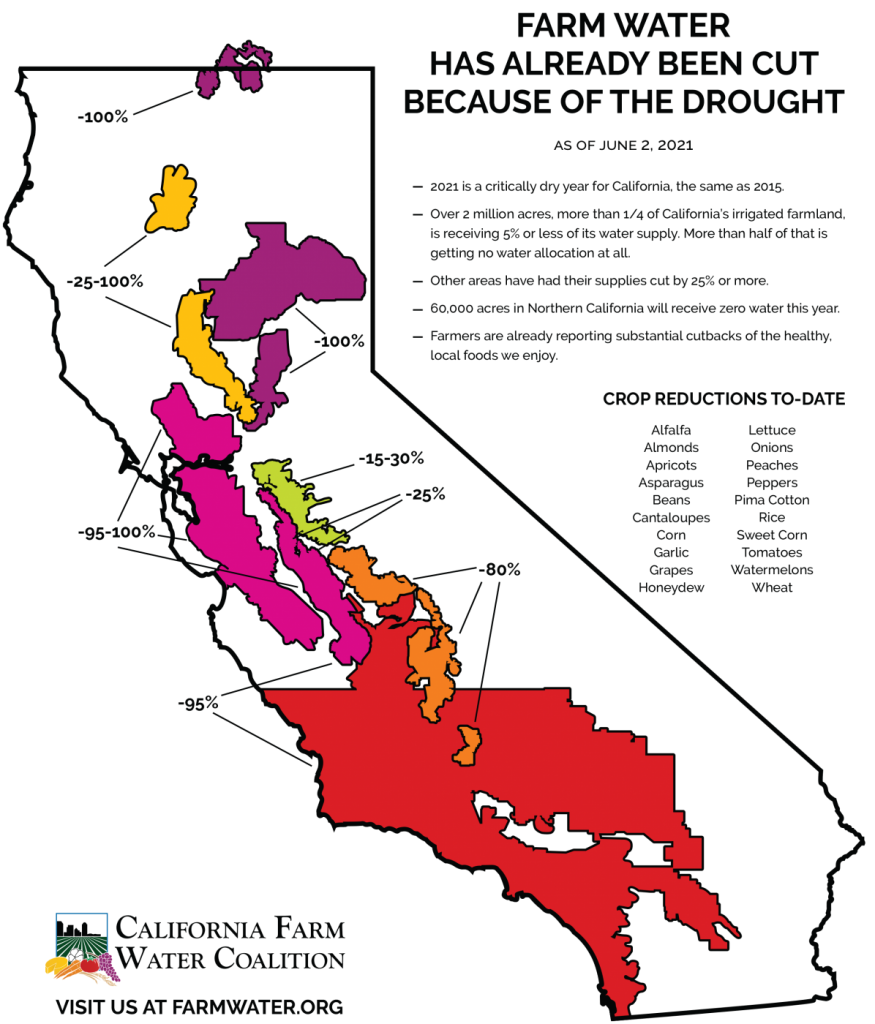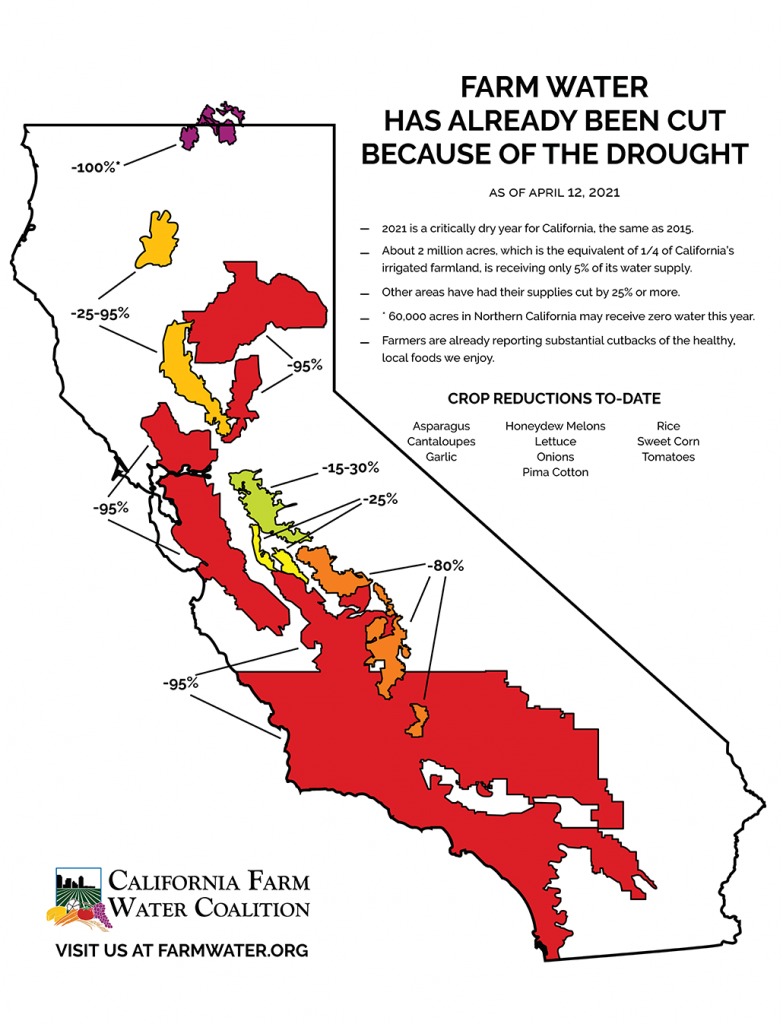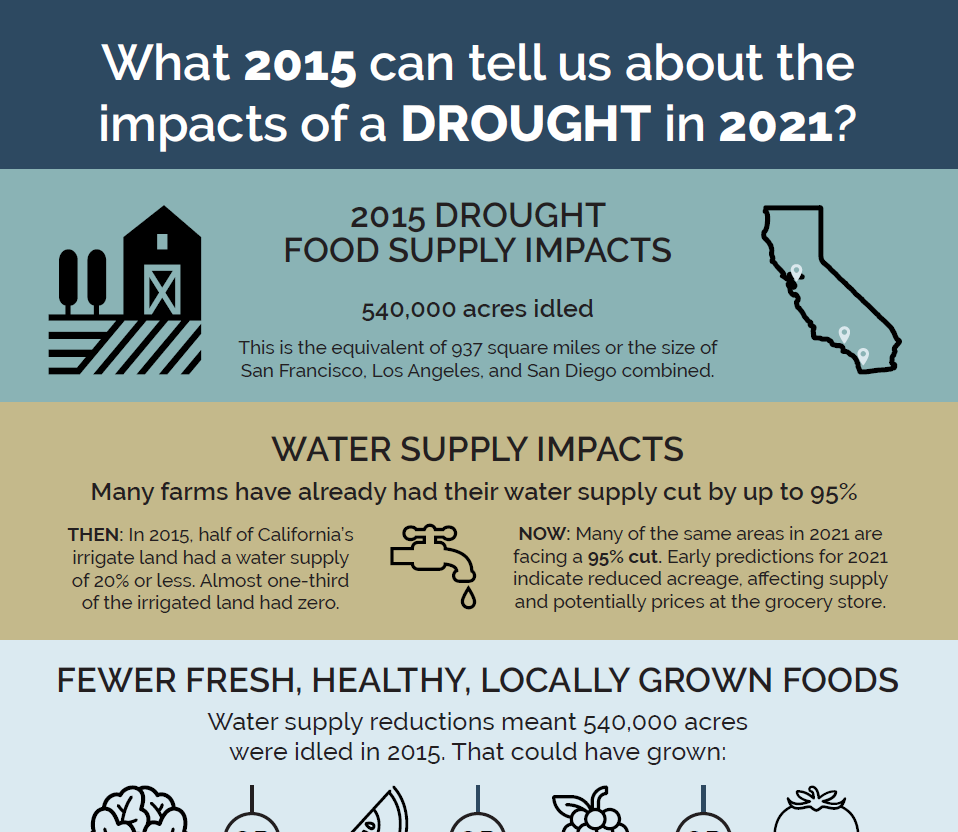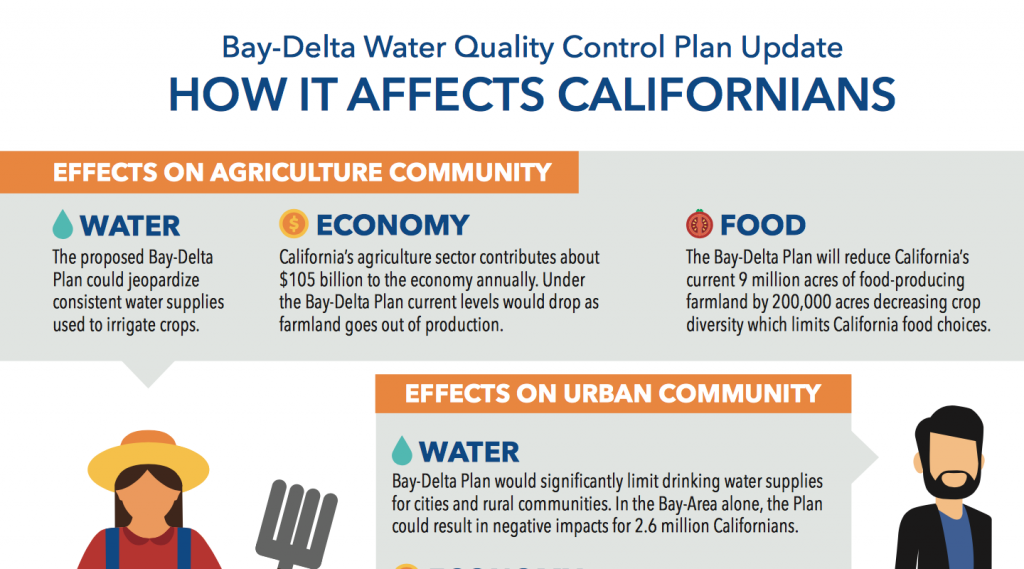From our dinner to our data centers, everything has a water footprint. Find out more about how much water it takes to grow our food or charge our cars with this infographic.
Continue readingWhat Does it Mean to Californians When Farmland is Fallowed?
What Will One Acre Grow?
2022 Fallowing and Economic Impact Estimates
Updated Map – 2021 Farm Water Supplies Cut Again
Updated June, 2021: California farms are bearing the brunt of this year’s short water supply and have been forced to reduce the acreage of popular California crops, such as asparagus, melons, lettuce, rice, tomatoes, sweet corn, and others. Water supply reductions mean fewer fresh fruits and vegetables for consumers, massive farm-related job losses, and billions […]
Map Shows 2021 Farm Water Supply Cuts
Click here to see the latest map. Updated: June 2021 California farms are bearing the brunt of this year’s short water supply and have been forced to reduce the acreage of popular California crops, such as asparagus, melons, lettuce, rice, tomatoes, sweet corn, and others. Water supply reductions mean fewer fresh fruits and vegetables for […]
What can the 2015 drought tell us about the impacts of a drought in 2021?
2019 Biological Opinion Fact Sheet
In October of 2019, the U.S. Fish and Wildlife Service (FWS) and the National Marine Fisheries Service (NMFS) released new biological opinions (BiOps) analyzing the operation of the Federal Central Valley project (CVP) and the California State Water Project (SWP). Following the release of the BiOps, there were numerous inaccurate characterizations of the opinions. To […]
Myths vs. Facts: 2019 Biological Opinions
Myths vs. Facts: 2019 Biological Opinions for Long-Term Operations of the Central Valley Project and the State Water Project In October of 2019, the U.S. Fish and Wildlife Service (FWS) and the National Marine Fisheries Service (NMFS) released new biological opinions (BiOps) analyzing the operation of the Federal Central Valley Project (CVP) and the California […]
